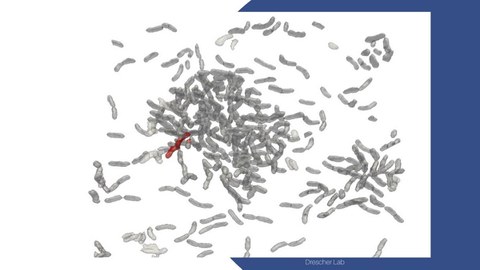Mechanisms underlying emergence of antibiotic tolerance of Vibrio cholerae biofilms
- Prof Dr Knut Drescher Universität Basel, Biozentrum.
- Prof Dr Kai Papenfort Friedrich-Schiller Universität Jena, Institute für Mikrobiologie.
Bacteria have the ability to form spatially structured multicellular communities called biofilms. Biofilms are considered to be the dominant form of bacterial life on our planet and they are well-known to promote microbial survival under harmful environmental conditions. For example, biofilm-associated cells display increased tolerance towards antibiotic treatment when compared to planktonic bacteria, which complicates antimicrobial intervention in clinical settings. Thus, antibiotic tolerance presents an important multicellular function of biofilms with clear fitness benefits; however, the underlying regulatory processes and biophysical mechanisms are unclear.
In this proposal, we aim to close this gap by studying the emergent antibiotic tolerance of biofilms formed by the major human pathogen Vibrio cholerae. Our preliminary data indicate that increased antibiotic tolerance is linked to biofilm formation in V. cholerae and that community-associated functions such as quorum sensing, biofilm architecture, physiological differentiation, and stochastic gene expression play into this process. To understand the molecular principles that result in antibiotic tolerance in biofilms, we will harness the combined power of live-cell microscopy, genetic, transcriptomic, and image analyses tools at the population-wide, as well as the single cell level.
At the most general level, the research will advance our understanding of how bacteria employ the unique molecular and biophysical properties of biofilms to orchestrate their response to environmental stresses. At a practical level, our research could reveal new strategies for controlling biofilm-associated bacterial growth, with possible applications in medicine, biotechnology, and the food industry.
| Researchers |
| Niklas Netter (PhD Student) |

